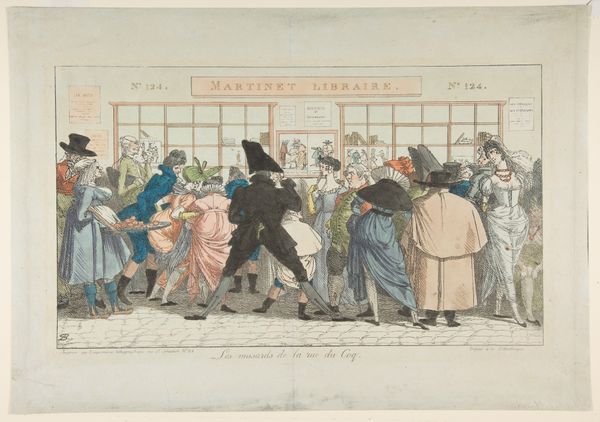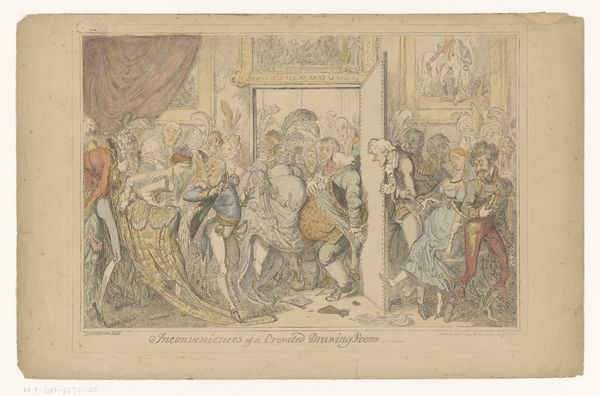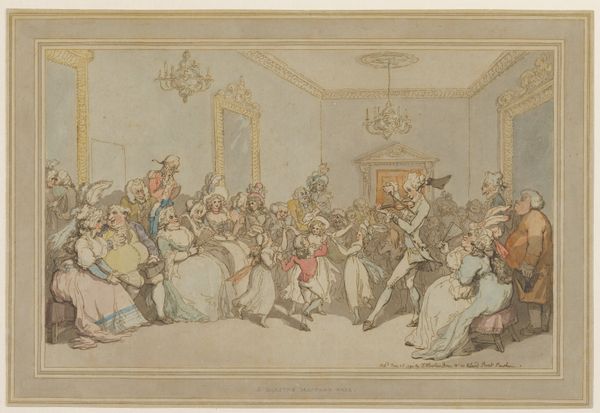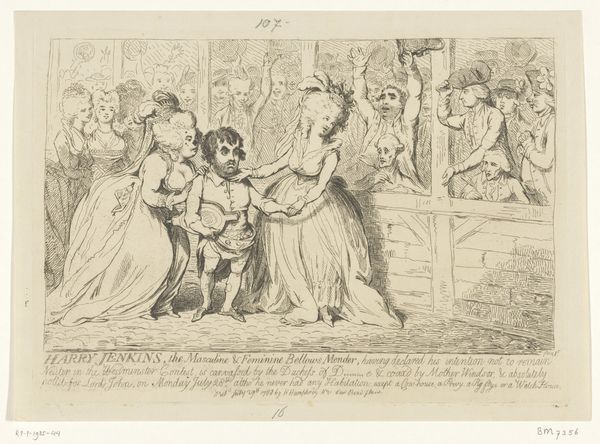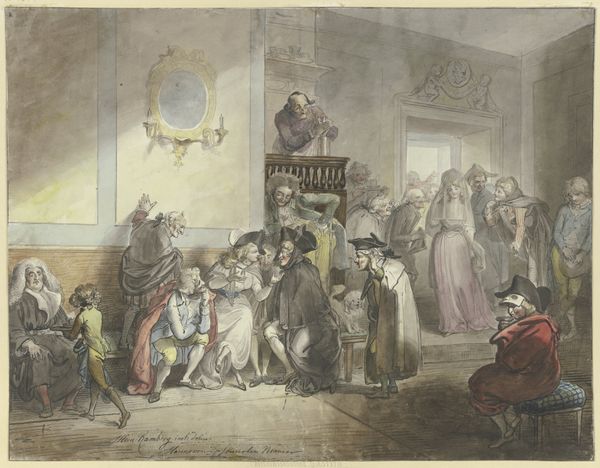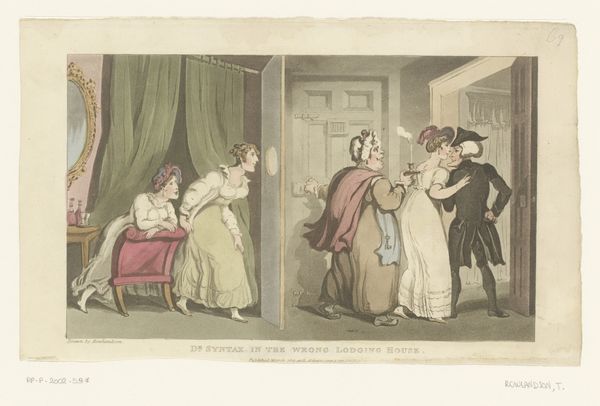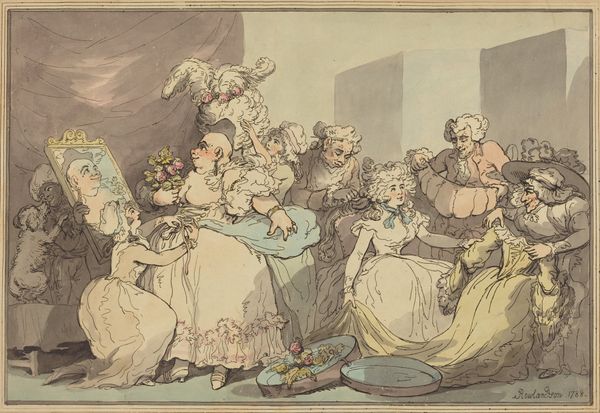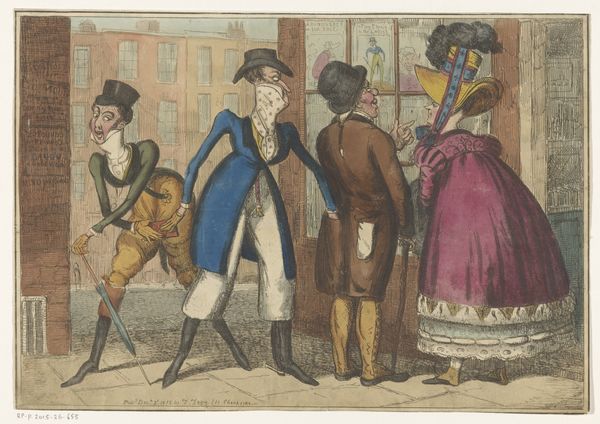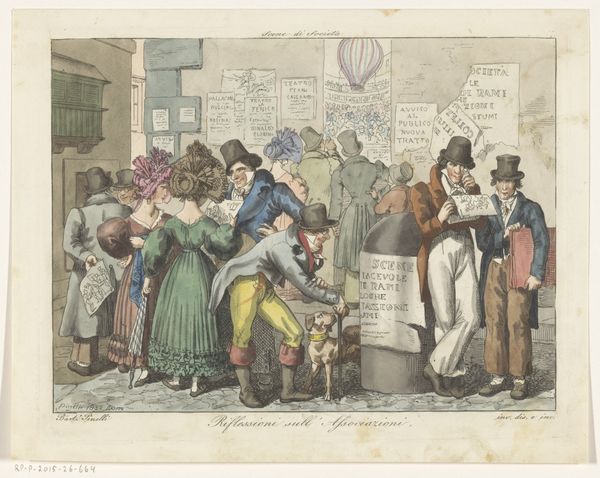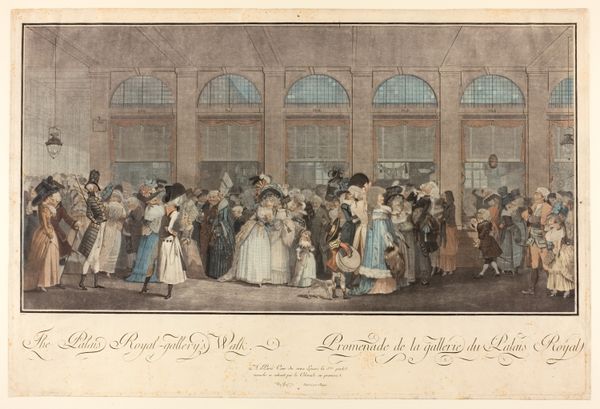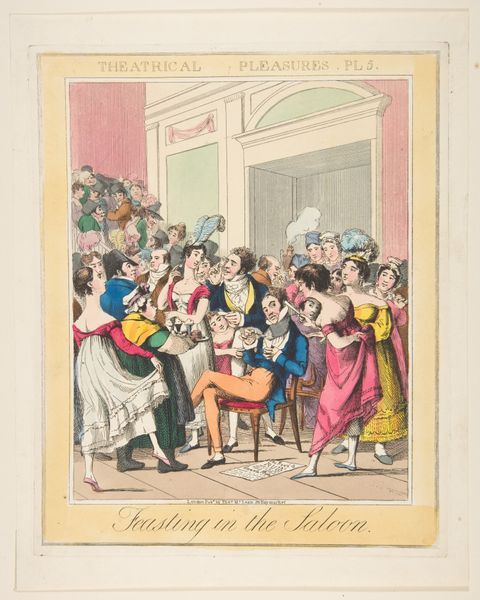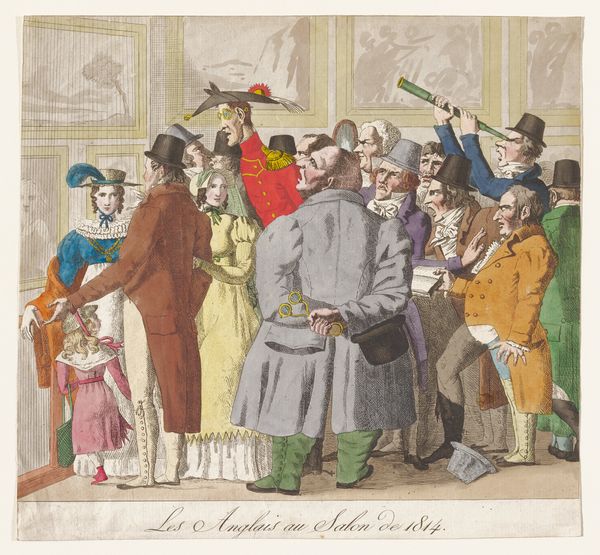
Dimensions: 18 x 23 3/4 in. (45.72 x 60.33 cm) (sheet)
Copyright: Public Domain
Curator: Right now, we’re standing in front of Thomas Rowlandson’s “Box-Lobby Loungers,” an etching with pen, watercolor, and colored pencil created around 1786. It's part of the Minneapolis Institute of Art's collection. Editor: My immediate thought? Chaos, but meticulously rendered chaos. The eye bounces all over; it’s a crowded social scene, yet each figure feels distinct, captured in a moment of heightened expression or gesture. Curator: Exactly. Rowlandson's genius lies in distilling a social atmosphere into caricatured types. Think of it as a mirror reflecting the societal obsessions and anxieties of late 18th-century England. The lobby, filled with gossiping, flirting, and status-seeking, becomes a stage for human folly. The theater box in the background is framed like another stage, a double framing creating this nested theatricality. Editor: But let’s also look at the materiality. This isn't just an etching; the layering of watercolor and colored pencil adds a softness and color to a medium usually associated with stark lines. Rowlandson wasn’t afraid to experiment. Notice, too, the relative disposability of prints versus paintings: this wasn't intended to be "high art," but mass entertainment, reproduced and consumed by a wider public. Think of these prints as the reality television of their day. Curator: That's perceptive. His masterful employment of line – energetic and spontaneous – imbues this piece with vivacity. It’s a far cry from the more reserved Neoclassical styles then ascendant. You see the hints of Romanticism emerging: an interest in raw emotion and immediacy. Editor: The physical act of creating multiples cheapens and democratizes image consumption in the era of aristocracy, too. Look closely— you can imagine him bent over the etching plate, mass-producing these scenes of leisure for popular consumption. How was labor perceived? How were class divisions emphasized through fashion? Curator: Those sharp social contrasts jump out the most to modern viewers, too. Through exaggeration, Rowlandson points to deeper truths. In these exaggerated postures, gaudy dress and busy crowds are subtle class critique, making you aware of the ways image can expose underlying societal tension and anxiety. Editor: Yes, a tension beautifully captured in line and color. Thinking about its life beyond a gallery setting— it's hard not to think about who might have collected these and under what circumstances. Curator: Looking at this drawing allows us to ask key questions about how societal values take shape through visual symbols, from clothing to physical attitude. What beliefs do these symbols reveal, and which beliefs were actively being reshaped? Editor: And equally important, through its production as reproducible imagery, consider the relationship between creator, labor, and consumer. These questions encourage me to want to visit a production space, somewhere outside the hallowed halls of this gallery space.
Comments
No comments
Be the first to comment and join the conversation on the ultimate creative platform.
